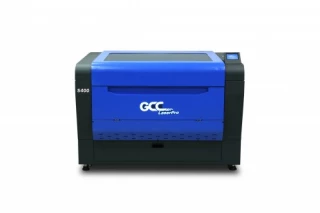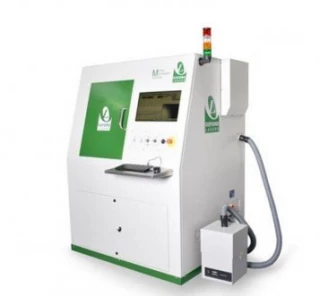Laser Material Processing Machines
Find the Best Laser Material Processing Products from Top Suppliers Worldwide - Browse a Wide Selection of Laser Cleaners, Welders, Cutters, Engravers, Micromachining Lasers, 3D Printers, Components, and Accessories on FindLight.
Frequently Asked Questions
What processes are considered Laser Material Processing
Generally speaking, any form of laser interaction that allows altering the material through the use of laser radiation can be considered laser material processing
What are the main processes that fall under Laser Material Processing
Laser cleaning (including laser wire stripping), laser welding, laser cutting (including laser drilling), laser engraving (including laser marking) and laser micromachining are the key processes that have been well developed in the past few decades.
What is a laser cleaner?
A laser cleaner is a device that uses a laser beam to remove contaminants, such as rust, paint, and dirt, from a surface. The laser beam heats and vaporizes the contaminants, which are then blown away by a gas stream or vacuum. Laser cleaning is a non-contact and non-abrasive method that can remove contaminants from a wide range of materials, including metal, stone, and ceramics. It is often used in industrial and manufacturing settings, such as in the cleaning of molds and tooling, as well as in restoration and conservation applications, such as in the cleaning of historical artifacts and monuments. Laser cleaning can be performed with different types of lasers, including pulsed and continuous-wave lasers, and can be tailored to the specific needs of the application by adjusting the laser parameters, such as the pulse energy and repetition rate.
What is a Laser Welder?
A laser welder is a type of welding equipment that uses a laser beam to join two or more pieces of metal or other materials together. The laser beam is focused onto the workpiece, creating a small and intense heat source that melts and fuses the materials together. Laser welding can be performed with high precision and accuracy, and can produce strong and consistent welds with minimal distortion and heat-affected zone. Laser welders are commonly used in industrial and manufacturing settings for welding thin and delicate materials, as well as for applications that require high accuracy and speed. They are also used in the jewelry industry, where they can be used to weld and repair small and intricate components. Laser welders can operate in different modes, including pulsed and continuous wave, and can be tailored to the specific needs of the application by adjusting the laser parameters, such as the pulse energy and repetition rate.
What is a Laser Cutter?
A laser cutter is a type of machine that uses a laser beam to cut or engrave materials, such as metal, wood, plastic, and fabric. The laser beam is focused onto the material, creating a small and intense heat source that vaporizes or melts the material and creates a cut or mark. Laser cutters can produce high-quality cuts and engravings with high precision and accuracy, and can be used to create intricate designs and patterns. They are commonly used in industrial and manufacturing settings, such as in the production of signage, architectural models, and electronic components. They are also used in the arts and crafts industry, where they can be used to create custom designs on a variety of materials. Laser cutters can operate in different modes, including pulsed and continuous wave, and can be tailored to the specific needs of the application by adjusting the laser parameters, such as the power, speed, and focus.
What is a Laser Engraver?
A laser engraver is a type of machine that uses a laser beam to etch or engrave designs or text onto a wide range of materials, such as metal, wood, glass, plastic, and acrylic. The laser beam is focused onto the material, creating a small and intense heat source that vaporizes or melts the material and creates a mark. Laser engravers can produce high-quality engravings with high precision and accuracy, and can be used to create intricate designs, text, logos, and images. They are commonly used in industrial and manufacturing settings, such as in the production of signage, awards, and promotional items. They are also used in the arts and crafts industry, where they can be used to create custom designs on a variety of materials. Laser engravers can operate in different modes, including pulsed and continuous wave, and can be tailored to the specific needs of the application by adjusting the laser parameters, such as the power, speed, and focus.
What is a Micromachining Laser?
A micromachining laser is a type of laser that is used for precision material removal on a very small scale. It is used for high-precision manufacturing processes that require the removal of very small amounts of material, typically in the range of micrometers or nanometers. Micromachining lasers can be used for a variety of applications, including micro-drilling, micro-cutting, micro-milling, and micro-structuring of a wide range of materials, including metals, ceramics, glass, and polymers. The laser beam can be focused to a very small spot size, allowing for extremely precise material removal. Micromachining lasers can be operated in different modes, including pulsed and continuous wave, and can be tailored to the specific needs of the application by adjusting the laser parameters, such as the power, repetition rate, and pulse duration. They are commonly used in the semiconductor, electronics, and biomedical industries, as well as in academic research.
What is a 3D Laser Printer?
A 3D laser printer, also known as a laser sintering or selective laser melting (SLM) printer, is a type of 3D printing technology that uses a high-power laser to selectively melt and fuse thin layers of powdered material, such as metal, plastic, or ceramic, into a three-dimensional object. The laser beam is directed by a computer-controlled system that follows a pre-determined path, based on a 3D computer model of the object being printed. As each layer is melted and solidified, the printer adds the next layer until the final object is completed. 3D laser printers can produce complex and detailed parts with high accuracy and resolution, and are capable of creating structures that would be difficult or impossible to produce with traditional manufacturing methods. They are commonly used in industries such as aerospace, automotive, and medical, where high-precision parts and components are required.
What types of lasers are used for material processing?
Lasers used for material processing can include CO2 lasers, fiber lasers, solid-state lasers, and ultrashort pulse lasers. The choice of laser depends on the material being processed, the desired processing speed, and the required precision.
What are the advantages of laser material processing over traditional methods?
Laser material processing offers several advantages over traditional methods, including greater precision, higher processing speeds, and the ability to process a wider range of materials. Lasers can also be used to process materials that are difficult or impossible to process using traditional methods.
What safety measures should be taken when using lasers for material processing?
Laser material processing can be hazardous, and proper safety measures should be taken to protect operators and bystanders. This can include using appropriate personal protective equipment, ensuring proper ventilation, and following proper laser safety protocols.
This FindLight category page on Laser Material Processing is a one-stop resource that provides links to various sub-categories where buyers can find products related to laser material processing. The page covers the different types of lasers used for material processing, the benefits of laser material processing, and common applications. Laser material processing offers several advantages over traditional methods, including higher precision, faster processing speeds, and the ability to process a wider range of materials. Buyers can find a vast collection of laser sources and suppliers listed on the site, including CO2 lasers, fiber lasers, solid-state lasers, ultrashort pulse lasers, and more. The sub-categories listed on the page include laser marking and engraving, laser cutting and drilling, laser welding and soldering, laser ablation and etching, and laser micromachining. The page also provides safety measures to take when using lasers for material processing. Whether you're a beginner or a professional in the field, the FindLight category page on Laser Material Processing is an invaluable resource for anyone looking to explore the world of laser material processing and find the right products for their needs.






